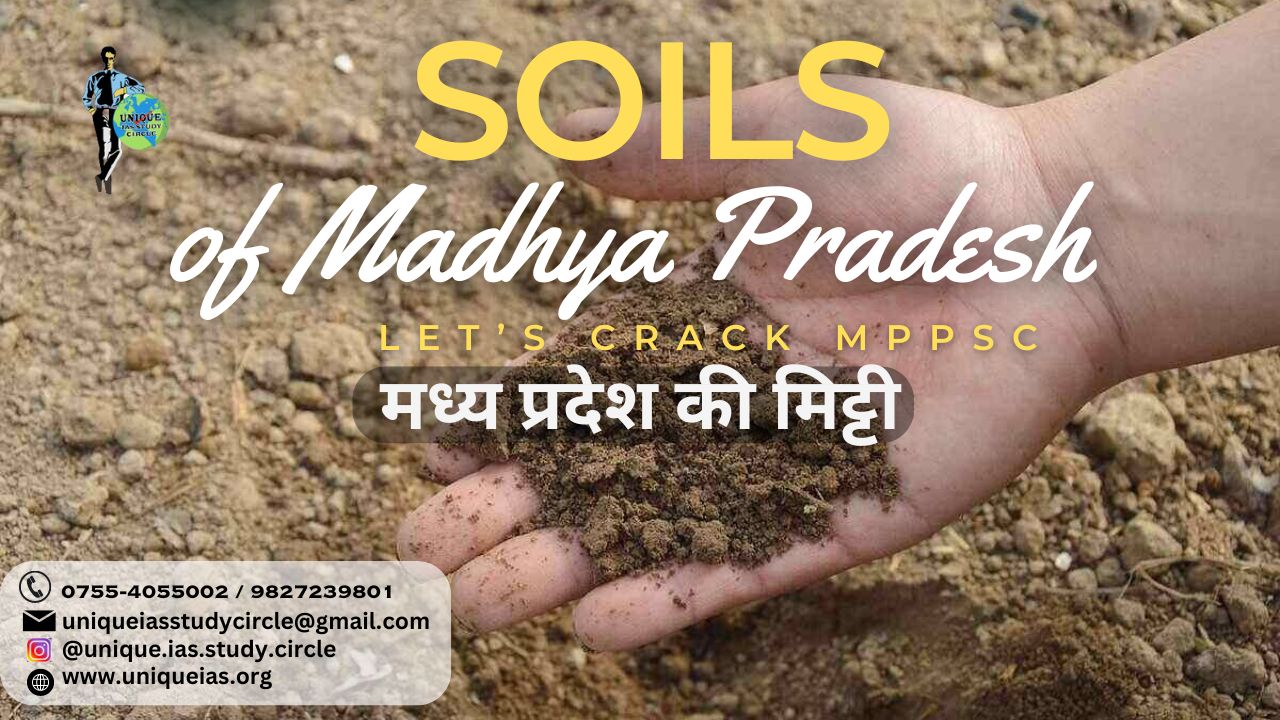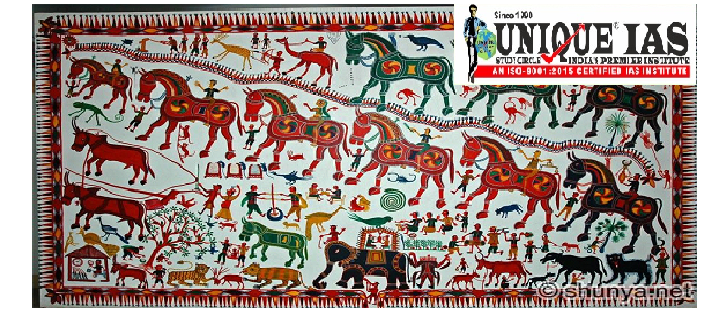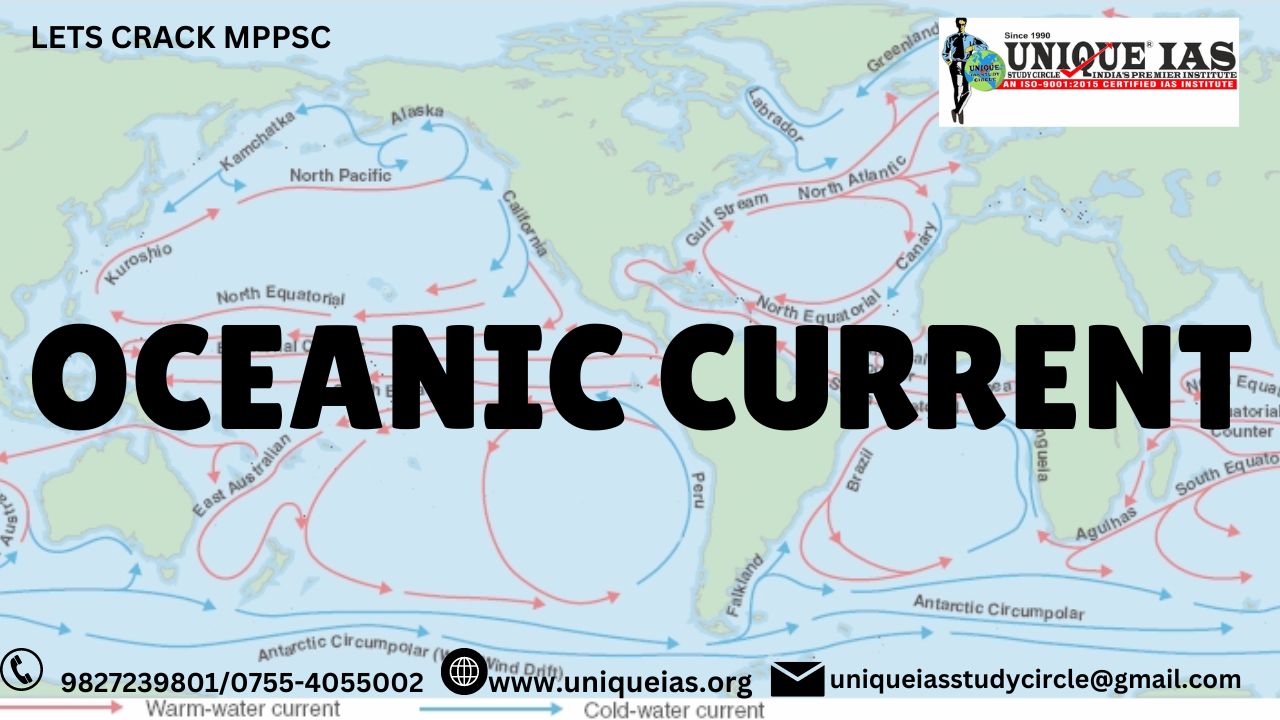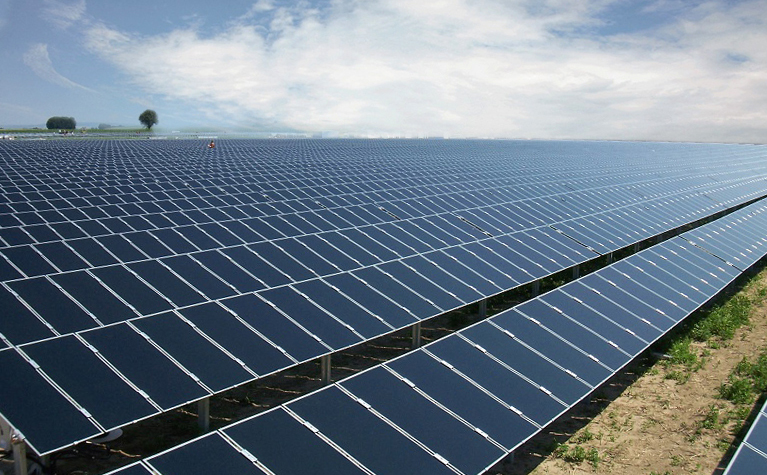Soils of MP- मप्र की मिट्टी
The nature of soil found in a State decides about its agriculture, industry, vegetation, growth-rate & per capita income.
The black cotton soil of Malwa is regarded as fertile soil .
The red-yellow soil found in eastern part slows down the development engine of the state.
The factors effecting nature of soil of MP, are as follows :-
1-Rains
2.Drainage
3-Parent Material - Black soil made up of humus & calcium, red-yellow made up of ferric oxide,
4- climate material-weather is moderate then soil will be bounded if extreme then soil will be loosely packed.
Major Soils of MP are as fallows
1-Black Cotton Soil :-
Also known as Regur. It is found in western area of MP. It covers maximum area of MP, i.e. Plateau of Malwa, ranges of Satpura.
Because of Clay & humus, it is black.
It has sufficient iron & calcium.
It is originated from deccan trap that's why black. When there is weathering of deccan trap the black soil is formed.
Black soil is categorized as follows :-
- Dark Black Soil - It is black in color due to sufficient amount of clay & humus.
- Ordinary Black Soil- This soil doesn't have sufficient amount of clay. It is found in Nimar.
- Shallow Black soil- Its layer is very shallow that's why its color is semi black.
Major Dist- Dist. of Malwa&Satpura.
2-Red & Yellow Soil :-
Yellow soil is found in eastern area of MP, while Red soil is found in northern areas like Bundelkhand, Panna, SagarYellow soil covers Shahdol , Sidhi, Rewa.
Red color of soil is due to ….oxidation of iron oxide.
It contains …sufficient quantity of calcium.
Yellow color of soil is due to….hydration of ferric oxide.
This soil is found on high lands & areas of steep slopes because rain water flows out humus & clay and this soil remains.
It is not very friendly for crops but if it treated with fertilizers & irrigation, then it gives better production.
3-Alluvial Soil :-
Found in northern area of MP i.e. Murena, Bhind, Sheopur etc.
It is the …most fertile soil among all soils. This is rich in mineral contents.
Alluvial soil is a mixture of sand, silt, and clay.
There are 2 types of alluvial soil - bhangar and khadar.
Bhangar soil is made up of new deposits and is light in color.
Khadar soil is made up of old alluvium and lime nodules of Kanker and is darker in color.
It is unconsolidated & loose soil.
This soil is made when river Chambal & tributaries had eroded these areas.
This is a very fertile soil but it lacks nitrogen & Phosphorous.
Because of productivity, these areas are regarded as more fertile areas in per hectare produce.
4-Lateral soil - itis found in 4% of the geographic areas of Madhya Pradesh.
It covers districts like Shivpuri, Gwalior, Chhindwara(70% area), Balaghat(70 % area), etc.
The soil is light in texture and mostly found in the plains and river belts.
Laterite soil is rich in aluminum and iron, formed in wet and hot tropical areas.
Almost all laterites are rusty red due to the presence of iron oxides. It is prepared by the long-lasting and intensive weathering of the parent rock.
These soils often develop in areas with high temperatures and heavy rainfall, leading to the leaching of minerals and the accumulation of iron and aluminum oxides.
Soil Erosion in MP
Out of total geographic area, the 6,00,000 acre area has been destroyed due to soil erosion. It is increasing day by day.
There are following reasons for soil erosion
a. Water & air
b. Poor Drainage
c. Lack of Vegetation
d. Nature of soil- some soil by theircharacterare loosely packed.
e. Human neglect, Deforestation, denudation of grazing lands.
Types of Soil Erosion
1- Sheet Erosion- is primary stage of erosion. The upper layer is destroyed.
2-Rill Erosion - when above is not controlled, the sheet takes form of a rill.
3-Gully Erosion- It’s the last stage of erosion when rill is not controlled then deep gullies are created. E.g. Chambal .
Control on Erosion
1) Bunding- In this field waste land development board is working, under it the slopes are protected by artificial structures.
2) Better drainage
3) Afforestation
4) Suitable planning.




.jpg)
.jpg)
.jpg)
.jpg)
.jpg)





